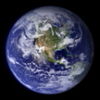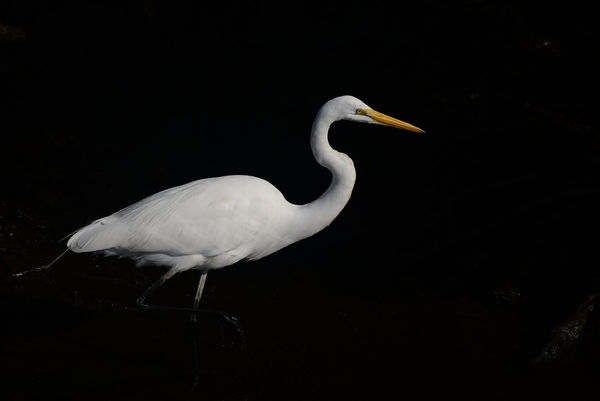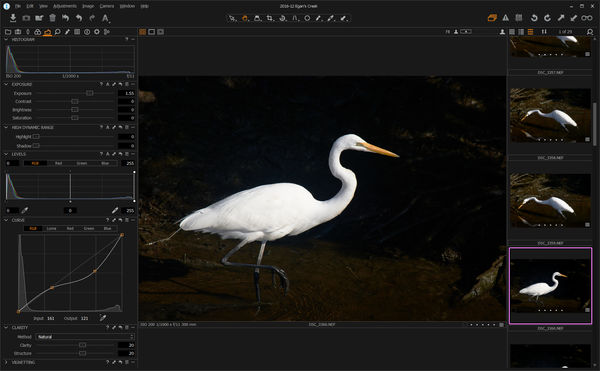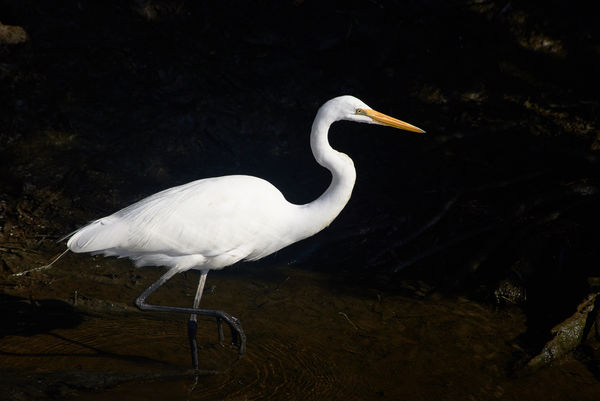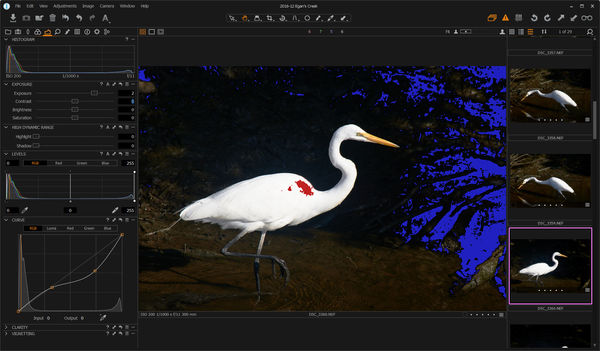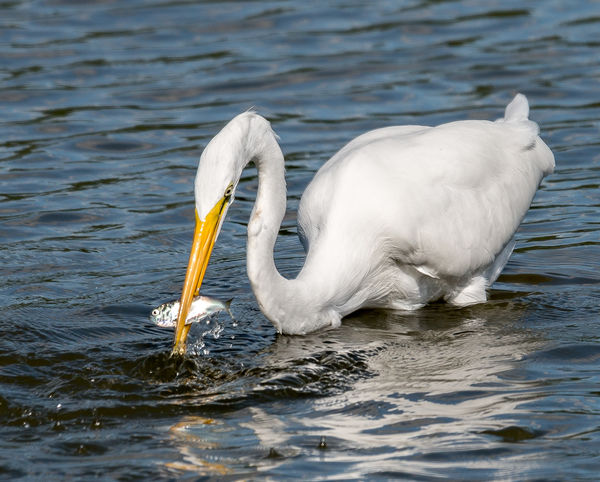Is ETTR/EBTR a Concept Whose Time has Passed?
Dec 22, 2016 19:46:32 #
There have been numerous posts promoting the use of ETTR/EBTR (expose to the right, expose beyond the right) based on a ten year old concept developed by Michael Reichmann of the Luminous Landscape. The idea originated when Reichmann observed that his existing camera was not taking full advantage of its dynamic range (DR) thereby missing an opportunity to suppress noise and use the full DR of the sensor in capturing images.
A lot of progress made in the past ten years has widened the DR of modern sensors and found ways to suppress noise that were not part of the cameras that Reichmann originally used. By the time Reichmann passed away earlier this year he had stopped promoting the concept of ETTR/EBTR because modern sensors have pretty much eliminated the need for it.
However, there are still die-hard users of the technique who promote its use, in the absence of any remaining logical need for the convoluted process.
Today's cameras support DRs of over 14 Ev at base ISO, far exceeding the DR in the vast majority of scenes encountered by the photographer. In those rare cases where the scene's DR is too wide for the sensor, HDR can be used to combine multiple exposures.
The signal to noise ratio (S/N) is also highest at base ISO. For situations that call for the use of a higher ISO (lower S/N) there are many solutions for removing unwanted noise from the image.
ETTR/EBTR has been promoted as a way to maximize the use of the camera's DR by increasing exposure. That claim is misleading. All you need to do to accomplish that is to lower ISO and thereby increase the recommended exposure - slow down the shutter.
It has also been suggested that ETTR/EBTR can reduce S/N, noise. That is also not true. What reduces noise is the additional exposure (signal) from slowing the shutter speed. You can also get there by reducing the ISO and slowing the shutter.
Nowhere in the promotion of ETTR/EBTR has it been suggested that you can get the most out of a camera’s dynamic range by simply lowering the ISO and increasing the exposure time. Neither is it suggested that reducing the ISO and increasing the exposure is a simple way to increase S/N and reduce visible noise.
Nowhere in the promotion of ETTR/EBTR is the dynamic range of the scene compared to the dynamic range of the camera at any ISO. That would expose a critical piece of missing information – that the maximum dynamic range of the camera is only available at base ISO.
In fact, I never provided any images to support the contention that ETTR/EBTR above base ISO provided any visible benefits over simply lowering the ISO and exposing normally, which also reduces the shutter speed. Neither have you and neither has anyone else, on UHH or anywhere on the Internet.
On the contrary, I have produced clear evidence that by using base ISO you can minimize noise and maximize the use of the camera's DR.
Examples using "an inordinately high ISO" are grossly misleading bordering on fraudulent.
That is partially true. But you can only use the full available DR at base ISO.
The other issue is that you do not always need to use the camera's full available DR. If the DR of the scene is low, as on a foggy or overcast day, you do not need much DR to properly capture a scene.
In fact, I have posted a complete list of disadvantages to the use of ETTR/EBTR. Here are just a few:
- Determining the ERADR (Extra RAW-Accessible Dynamic Range) for your camera requires careful research since it is not a constant. It is less at higher ISO settings.
- Setting up the exposure for an image is not simple since you need to look at the histogram, possibly after attempting a test image, and then calculate how much exposure you can get away with adding.
- Once the final image is captured, you often cannot review the results on your camera because the resulting JPEG representation may be washed out.
- There is always the danger that the histogram is inaccurate and that you might go too far to the right, blowing highlights.
- There may be highlight and shadow details in which you are not really interested. This complicate the interpretation of the histogram.
So not only are there significant disadvantages to the use of ETTR/EBTR, it is clear that there are no demonstrable advantages.
A lot of progress made in the past ten years has widened the DR of modern sensors and found ways to suppress noise that were not part of the cameras that Reichmann originally used. By the time Reichmann passed away earlier this year he had stopped promoting the concept of ETTR/EBTR because modern sensors have pretty much eliminated the need for it.
However, there are still die-hard users of the technique who promote its use, in the absence of any remaining logical need for the convoluted process.
Today's cameras support DRs of over 14 Ev at base ISO, far exceeding the DR in the vast majority of scenes encountered by the photographer. In those rare cases where the scene's DR is too wide for the sensor, HDR can be used to combine multiple exposures.
The signal to noise ratio (S/N) is also highest at base ISO. For situations that call for the use of a higher ISO (lower S/N) there are many solutions for removing unwanted noise from the image.
ETTR/EBTR has been promoted as a way to maximize the use of the camera's DR by increasing exposure. That claim is misleading. All you need to do to accomplish that is to lower ISO and thereby increase the recommended exposure - slow down the shutter.
It has also been suggested that ETTR/EBTR can reduce S/N, noise. That is also not true. What reduces noise is the additional exposure (signal) from slowing the shutter speed. You can also get there by reducing the ISO and slowing the shutter.
Nowhere in the promotion of ETTR/EBTR has it been suggested that you can get the most out of a camera’s dynamic range by simply lowering the ISO and increasing the exposure time. Neither is it suggested that reducing the ISO and increasing the exposure is a simple way to increase S/N and reduce visible noise.
Nowhere in the promotion of ETTR/EBTR is the dynamic range of the scene compared to the dynamic range of the camera at any ISO. That would expose a critical piece of missing information – that the maximum dynamic range of the camera is only available at base ISO.
Uuglypher wrote:
… your claim "So far nobody has demonstrated a visible difference or consequence from not fully employing the ETTR/EBTR approach to a normal scene over simply exposing normally" is simply not true.
Have you forgotten that images YOU provided to support that contention were shown, in fact, to demonstrate specifically that very difference (beyond the other images that I have provided)
Have you forgotten that images YOU provided to support that contention were shown, in fact, to demonstrate specifically that very difference (beyond the other images that I have provided)
In fact, I never provided any images to support the contention that ETTR/EBTR above base ISO provided any visible benefits over simply lowering the ISO and exposing normally, which also reduces the shutter speed. Neither have you and neither has anyone else, on UHH or anywhere on the Internet.
On the contrary, I have produced clear evidence that by using base ISO you can minimize noise and maximize the use of the camera's DR.
Uuglypher wrote:
… Depending on the camera the prominent difference will be demonstrated by an definitely discernible increase in shadow detail with, in some those cameras that show increased shadow noise with decreased exposure, a distinct decrease in that noise as well. (see the illustration below taken even with an inordinately high ISO)…
Examples using "an inordinately high ISO" are grossly misleading bordering on fraudulent.
Uuglypher wrote:
… if your files will be subjected to competent professional lab printing to be viewed under appropriate illumination, exposing raw image data capture in a manner that does not utilize the full available DR is folly. ...
That is partially true. But you can only use the full available DR at base ISO.
The other issue is that you do not always need to use the camera's full available DR. If the DR of the scene is low, as on a foggy or overcast day, you do not need much DR to properly capture a scene.
Uuglypher wrote:
… And you, Scotty, have yet to demonstrate the slightest disadvantage, under ANY circumstances, of assuring maximum use of available DR in exposing raw image data. …
In fact, I have posted a complete list of disadvantages to the use of ETTR/EBTR. Here are just a few:
- Determining the ERADR (Extra RAW-Accessible Dynamic Range) for your camera requires careful research since it is not a constant. It is less at higher ISO settings.
- Setting up the exposure for an image is not simple since you need to look at the histogram, possibly after attempting a test image, and then calculate how much exposure you can get away with adding.
- Once the final image is captured, you often cannot review the results on your camera because the resulting JPEG representation may be washed out.
- There is always the danger that the histogram is inaccurate and that you might go too far to the right, blowing highlights.
- There may be highlight and shadow details in which you are not really interested. This complicate the interpretation of the histogram.
So not only are there significant disadvantages to the use of ETTR/EBTR, it is clear that there are no demonstrable advantages.
Dec 22, 2016 20:44:55 #
The original post starts here - The Fallacy of the "JPEG+Raw" option http://www.uglyhedgehog.com/t-430379-1.html
Dec 22, 2016 20:46:57 #
selmslie wrote:
There have been numerous posts promoting the use o... (show quote)
Please let it RIP. Don't create a zombie.
Dec 22, 2016 20:53:39 #
BebuLamar wrote:
Please let it RIP. Don't create a zombie.
Well somebody keeps bringing it back to life - like Dracula back from the dead. Why? Self promotion?
Dec 22, 2016 21:06:31 #
selmslie wrote:
There have been numerous posts promoting the use o... (show quote)
Whatchutalkinbout Scotty?
Dec 23, 2016 06:00:24 #
Jim Bob wrote:
Whatchutalkinbout Scotty?
Yesterday I photographed a Great Egret in bright sunlight. I knew that the feathers would be a challenge to capture and that the camera's histogram might be misleading. So I set the exposure with an incident reading at ISO 400 and got a recommended exposure of 1/1000 @ f/11. I then set the camera to ISO 200 which produced a slightly dark image for the JPEG straight out of the camera - see #1 below. The JPEG tells me where there is hope of extracting tonality or detail from the feathers.
I developed the raw file to render the feathers where I originally wanted them in the final image - see #2 for the edit session. The exposure was increased in the edit by 1.55 stops and adjustments were made to the tonality curve to increase the contrast in the feathers.
What is more important is the shape of the histogram. The bulk of the reading is at the left end of the display and there is a long flat line stretching all the way to the right end of the histogram that represents the feathers. This histogram would have been very difficult to interpret in broad daylight.
The shadows were not important, only background for the egret. They are mostly beyond the DOF. Despite the initial underexposure there is absolutely no noise.
The egret's feathers retain as much detail as possible, including the reflection of the water ripples.
ETTR/EBTR would have been much more difficult and risky.
Dec 23, 2016 06:42:21 #
selmslie wrote:
Yesterday I photographed a Great Egret in bright s... (show quote)
Yes, what you just said!

Dec 23, 2016 08:00:57 #
I believe what selmslie posted is what Canon Highlight Tone Priority does.
Dec 23, 2016 09:15:09 #
Jrhoffman75 wrote:
I believe what selmslie posted is what Canon Highlight Tone Priority does.
Not quite the same thing.
It was not easy to track down a description of Canon Highlight Tone Priority from among the opinions and speculation posted on the Internet. From what I was able to gather it appears to be a form of highlight recovery like what you might do with PS or Capture One during the development of an image from the raw information. It reaches out beyond the point where a JPEG's highlights would otherwise be clipped and brings them back into the visible range. It appears that this adjustment is only applied to the in-camera JPEG.
You may notice in the edit session screen shots that highlight recovery was not used. Highlight recovery slightly reduces the contrast of the brightest portion of the image to get the tones to fit. I did not want that.
Instead, the total exposure was adjusted until the right end of the histogram touched the end of the histogram's display. I then backed off a little.
To make it clear where the limits are during the editing process I used Capture One's Exposure Warning feature. Camera Raw calls this by another name. Note that with the Exposure slider at a value of 2, the highlights are flagged in red and the blue area indicates where there might be loss of detail in the shadows. I did not care about the shadows.
Dec 23, 2016 09:28:04 #
selmslie wrote:
There have been numerous posts promoting the use o... (show quote)
Egrets in full daylight with dark foliage in the background. That is a great example of a really wide dynamic range.
I use ETTR, but not the same as you do. I use the camera's spot meter - it's an old habit from film days, when I used a Pentax or Minolta spotmeter - to find the brightest part of my scene where I want to retain detail. If I am at base ISO with a D800, I already know I can add 1 2/3 stops to the reading, to place the value in the proper zone without blown highlights. If I am at ISO 1600, I can only go about 1 stop at most before I lose detail. This works 100% of the time, but you have to spend a little effort to find you camera's limits. So this is my high contrast scenario.
When I shoot low contrast, I still try to move the histogram to the right - just because there will actually be more image data recorded above the base noise level in the darker areas. Digital sensors, unlike film do not suffer from reciprocity, and they have a linear response to light. Each step up from zero data recorded is a doubling of data recorded - 0-1-2-4-8-16-32-64-128, etc. Just for argument's sake, if your camera contributes noice at 4, and a "normal" exposure would place the darkest areas at 4, then any detail would be indistinguishable from the noise. Following the same logic, if you "place" your darkest shadow areas ad 256, or higher, then there will be considerably more tonal and color information recorded above the noise level.
If you make an exposure that does not max out the highlights without blowing them, well, it's like finishing a business transaction and leaving money on the table - you could have exposed the image to a higher level, without any downside, and you could have cleaner shadows if your image has high contrast.
These are a couple of images shot using camera's spotmeter/ETTR. I will post something later that was shot with ETTR and contains lots of dark areas - original exposure looks much brighter than it was when I took it, but in post processing I lowered the exposure to give me the correct tones. Both where taken in bright early afternoon sunlight.
Dec 23, 2016 09:53:46 #
RRS
Loc: Not sure
selmslie wrote:
There have been numerous posts promoting the use o... (show quote)
Scotty this is interesting and makes one think but is this a rehash of a post from your past? I seem to remember reading almost the same thing a year or two ago. I don't mind reading it again as it's always good to not blow out the heads on my Eagle and Osprey shots. I find that if I use ETTR without over doing it I can reduce the brightness or white of the image in PP without introducing noise. I can only slow down or reduce the shutter speed or ISO so far as I'm shooting BIF, it's a thin line.
Dec 23, 2016 10:19:56 #
catchlight..
Loc: Wisconsin USA- Halden Norway
Probably one of the best articles I have ever read on the subject: https://photographylife.com/exposing-to-the-right-explained
Dec 23, 2016 10:43:30 #
when I learned about ETTR, I tried it, did nothing for me, as for the egret photos above, Great shots, egrets are hard to get perfect. Especially on a sunny day....
Dec 23, 2016 10:54:45 #
Gene51 wrote:
Egrets in full daylight with dark foliage in the b... (show quote)
Very nice images.
Neither of them has a particularly dark background. You could probably have under-exposed or over-exposed without doing any harm to the rendition of the water.
I checked the EXIF information and saw that you used ISO 100, f/7.1 and exposures of 1/800 and 1/1000 respectively. That's about EV 15.3 and 15.7, only about 1/3 or 2/3 stops above the Sunny 16 rule for ISO 100: "EV 15 - Typical scene in full or slightly hazy sunlight (distinct shadows)." Even without metering the scene, your exposures appear to be within less than one stop of "normal."
So the real question is not whether you use ETTR/EBTR or are simply aware of what it takes to avoid blowing the highlights. Knowledge is power. There is definitely something to be gained from understanding the principles of ETTR and how the data in a raw file contributes to the final result.
What I would still like to see is an example of what bad things happen if you do not use ETTR/EBTR while shooting at base ISO. So far we have clearly demonstrated that noise is not an issue. Shooting at base ISO with a modern camera eliminates this problem.
The only other bad thing that might possibly happen is that the darker portions of a scene, where the raw file is using very few bits to record the tonality, will show a deterioration in color or tonal representation. I have been asking for a credible demonstration of this problem. I have not been able to capture an image that shows it and apparently nobody else can either.
Dec 23, 2016 11:11:44 #
RRS wrote:
Scotty this is interesting and makes one think but... (show quote)
Yes, I have addressed this question in the past, usually in the context of rebutting another exaggerated claim regarding the wonders of EBTR. I have learned how to use it and all of the theoretical issues that are behind it. I'm not sorry that I understand it.
But I am pragmatic. If I can't see a benefit from going to all of the recommended effort and if I can find a simple solution I see no point in wasting my time jumping through a lot of hoops.
I enough know not to blow my highlights and I know that I should use the lowest practical ISO. Shooting in daylight, especially from a tripod, base ISO works fine.
catchlight.. wrote:
Probably one of the best articles I have ever read on the subject: https://photographylife.com/exposing-to-the-right-explained
That's probably the best article I have seen on the subject. If you make it down to 10) Is it Worth It? you will find, "With the extreme dynamic range capabilities of modern sensors, as well as a much lower amount of noise at base ISO, the value of ETTR is coming under scrutiny in the photographic community. Since it is so easy to recover shadows with modern cameras, isn’t it better to go with a “safer” exposure that is less likely to blow out the highlights? ..." Keep reading and you will see why I started this thread.
bdk wrote:
when I learned about ETTR, I tried it, did nothing for me ...
That's pretty much my point in a nutshell. It's an academic exercise that delivers no visible benefits. When you boil it down, photography is all about what is visible.
If you want to reply, then register here. Registration is free and your account is created instantly, so you can post right away.

